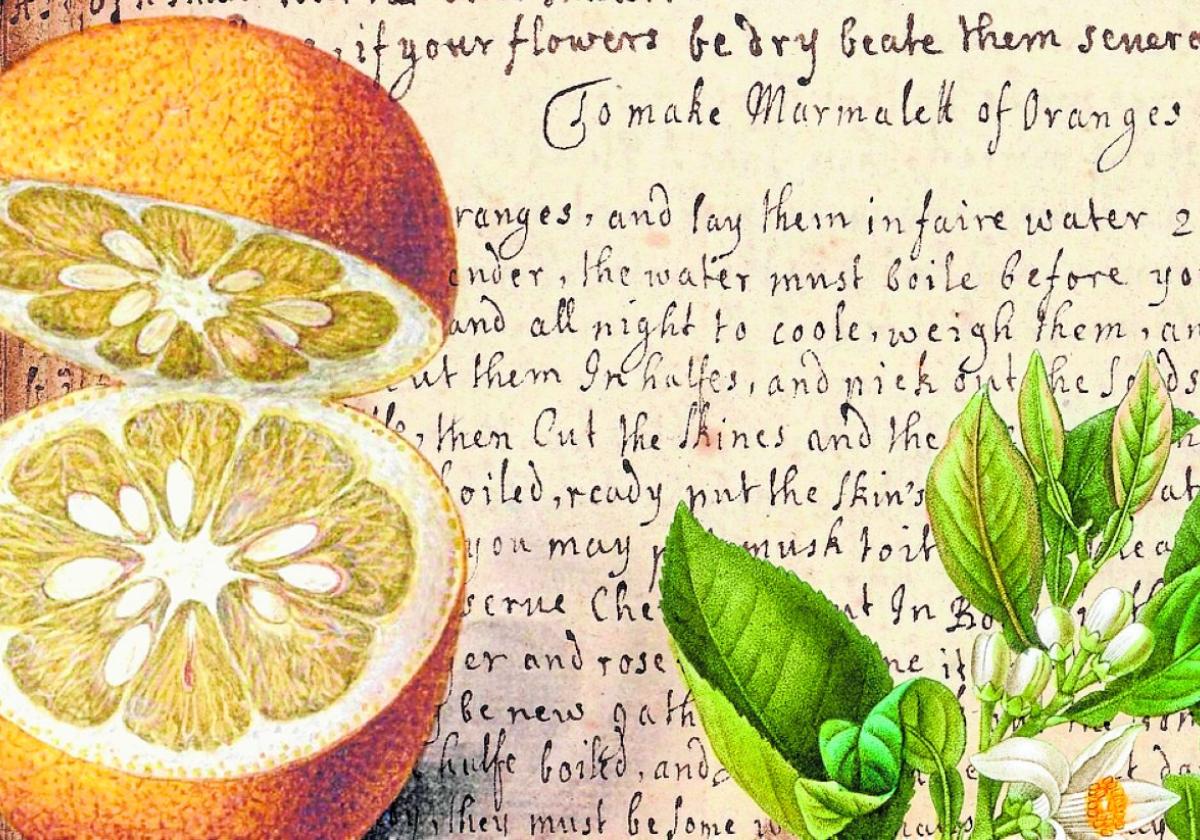

Sections
Highlight

Ana Vega
Madrid
Friday, 24 January 2025, 14:36
Despite being born in the most remote jungles of "darkest Peru", Paddington Bear carries the name of a famous London train station. He also wears a duffel coat, a hat and speaks English, but his creator Michael Bond wanted him to be even more "British". So, Paddington loves, above all else, marmalade sandwiches, specifically with a bitter orange filling. To us it may not seem very appealing to children's palates, but when A Bear Called Paddington was published in 1958, orange marmalade had been the standard confiture in the British Isles for several centuries and was a staple of breakfasts and snacks.
During World War II and the strict food rationing that followed, fresh oranges, sugar and of course marmalade - whether homemade or imported - became luxurious rarities for Britons. They tried to remember better times with substitutes, often sad orange-coloured jellies made with apple and carrot juice that bore little resemblance to the product they longed for.
If for many the "bottled sun from Andalucía" is the famous Tío Pepe sherry, for others it is the orange marmalade, traditionally made with fruit from Seville.
When in 1954 Elizabeth II confirmed the end of rationing and import restrictions, the British breathed a sigh of relief. At last they could have marmalade for breakfast again. The previous year Edmund Hillary had taken it with him on his ascent of Everest, just as Scott did on his expedition to Antarctica in 1912.
Despite the fact that it was made with ingredients that did not grow in Great Britain (oranges and sugarcane), bitter orange marmalade spread during the 19th century to all corners of the British Empire and became part of the British diet.
The royal family ate it, James Bond enjoyed it for breakfast in Ian Fleming's novels, Enid Blyton's characters snacked on it and Paddington Bear ate it, at any time and place, between two slices of bread. It is precisely Paddington and the success of his first two film appearances, released in 2014 and 2017, that can be considered responsible for the recent increase in sales and the renewed passion for marmalade in the United Kingdom.
In the Spanish dubbing of Paddington and Paddington 2 an idiomatic nuance is lost that demonstrates the British fervor for this confiture. In English the word "marmalade" is applied exclusively to preserves made with citrus fruits and is therefore not comparable to the generic term "mermelada", used, in Spanish, for any jam.
Curiously, both words have the same etymology: they come from the Portuguese "marmelada", which means... quince jam. In Portugal, a marmelo is a quince and marmelada is the solid-textured jelly made from it.
The success of the pioneering Portuguese sugar industry meant that in the 15th century their preserves and sweets were exported all over Europe, so much so that quince jelly, a favourite at the time, ended up giving its name in many languages to an entire category of sweets.
The English first came across Portuguese marmalade and quince jelly during the time of King Henry VIII. They adopted it as "marmelet", "marmalett" or "marmaladoo" and soon learned to make it themselves thanks to the arrival of Madeira sugar in British ports.
The marmalade of 500 years ago was very firm, and could be cut with a knife or stored in boxes due to the high pectin content of the quince peel and seeds. Apples and citrus fruits are also rich in this natural thickener, especially the bitter orange or Citrus x aurantium, which at that time was still much more common than the sweet orange.
In the middle of the 16th century, ships loaded with oranges and other Spanish citrus fruits such as lemons and grapefruit were already arriving in England and Scotland. In Spain the juice was used as a condiment, in a similar way to vinegar, and they were also candied whole or crushed and cooked in syrup to make jellies.
It was not long before the British discovered that with Seville oranges ("Seville oranges" refer to all bitter oranges, even if they are not Andalusian) they could make a wonderful marmalade.
The first recipe in English was published in 1602, in the book Delightes for Ladies by Sir Hugh Plat, and described its firm texture. That changed in the late 18th century, when the first commercial orange marmalade makers in Dundee, Scotland, popularised a spreadable conserve containing bits of peel.
It is still made like this today by the British, who this month are in a marmalade frenzy thanks to the arrival of the fruit during the Andalusian orange blossom. Oranges from the city of Seville are not destined for British plates, but some from the Royal Alcázar are still sent to the UK embassy to make the marmalade they eat for breakfast in Buckingham Palace. Britain's bottled sunshine from Andalucía.
Noticia Patrocinada
Publicidad
Clara Alba y José A. González
Juan Cano, Sara I. Belled y Clara Privé
Encarni Hinojosa | Málaga
Esta funcionalidad es exclusiva para suscriptores.
Reporta un error en esta noticia
Comentar es una ventaja exclusiva para registrados
¿Ya eres registrado?
Inicia sesiónNecesitas ser suscriptor para poder votar.